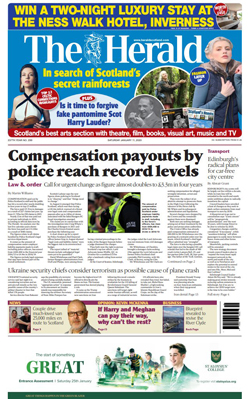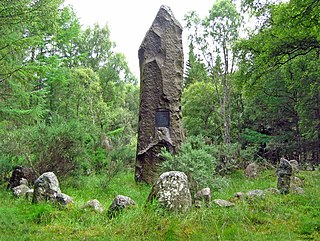Related Research Articles

The Herald is a Scottish broadsheet newspaper founded in 1783. The Herald is the longest running national newspaper in the world and is the eighth oldest daily paper in the world. The title was simplified from The Glasgow Herald in 1992. Following the closure of the Sunday Herald, the Herald on Sunday was launched as a Sunday edition on 9 September 2018.

Neil Miller Gunn was a prolific novelist, critic, and dramatist who emerged as one of the leading lights of the Scottish Renaissance of the 1920s and 1930s. With over twenty novels to his credit, Gunn was arguably the most influential Scottish fiction writer of the first half of the 20th century.

Lewis Grassic Gibbon was the pseudonym of James Leslie Mitchell, a Scottish writer. He was best known for A Scots Quair, a trilogy set in the north-east of Scotland in the early 20th century, of which all three parts have been serialised on BBC television.

Modern Scottish Poetry: An Anthology of the Scottish Renaissance 1920-1945 was a poetry anthology edited by Maurice Lindsay, and published in 1946 by Faber and Faber.
Maurice Lindsay CBE was a Scottish broadcaster, writer and poet. He was born in Glasgow. He was educated at The Glasgow Academy where he was a pupil from 1928-36. In later life, he served as an honorary governor of the school.
The Scottish Renaissance was a mainly literary movement of the early to mid-20th century that can be seen as the Scottish version of modernism. It is sometimes referred to as the Scottish literary renaissance, although its influence went beyond literature into music, visual arts, and politics. The writers and artists of the Scottish Renaissance displayed a profound interest in both modern philosophy and technology, as well as incorporating folk influences, and a strong concern for the fate of Scotland's declining languages.
Robert Lindsay of Pitscottie was a Scottish chronicler, author of The Historie and Chronicles of Scotland, 1436–1565, the first history of Scotland to be composed in Scots rather than Latin.

Clan Mackay is an ancient and once-powerful Highland Scottish clan from the far North of the Scottish Highlands, but with roots in the old Kingdom of Moray.
Helen Burness Cruickshank was a Scottish poet and suffragette and a focal point of the Scottish Renaissance. Scottish writers associated with the movement met at her home in Corstorphine.

The Kailyard school is a proposed literary movement of Scottish fiction; kailyard works were published and were most popular roughly from 1880–1914. The term originated from literary critics who mostly disparaged the works said to be within the school; it was not a term of self-identification used by authors alleged to be within it. According to these critics, kailyard literature depicted an idealised version of rural Scottish life, and was typically unchallenging and sentimental.

Crawford Castle, substantially in ruins, is located on the north bank of the River Clyde, around 1⁄2 mile north of Crawford, South Lanarkshire, Scotland. The ruins stand on an earlier motte and bailey earthwork. The castle is also known as Lindsay Tower, after its former owners, the Lindsay family. The strategic location of the castle, at NS954213, guards the strategically important Mennock Pass from England into the upper Clyde Valley.
Vivien Heilbron is a Scottish actress.

The Battle of Corrichie was fought on the slopes of the Hill of Fare in Aberdeenshire, Scotland, on 28 October 1562. It was fought between the forces of George Gordon, 4th Earl of Huntly, chief of Clan Gordon, and the forces of Mary, Queen of Scots, under James Stewart, 1st Earl of Moray.

The Association for Scottish Literary Studies (ASLS) is a Scottish educational charity, founded in 1970 to promote and support the teaching, study and writing of Scottish literature. Its founding members included the Scottish literary scholar Matthew McDiarmid (1914–1996). Originally based at the University of Aberdeen, it moved to its current home within the University of Glasgow in 1996. In November 2015, ASLS was allocated £40,000 by the Scottish Government to support its work providing teacher training and classroom resources for schools.
Margery Greenshields Palmer McCulloch was a Scottish literary scholar, author and co-editor of the Scottish Literary Review.
Events from the year 1973 in Scotland...
Events from the year 1932 in Scotland.

Poetry of Scotland includes all forms of verse written in Brythonic, Latin, Scottish Gaelic, Scots, French, English and Esperanto and any language in which poetry has been written within the boundaries of modern Scotland, or by Scottish people.

The novel in Scotland includes all long prose fiction published in Scotland and by Scottish authors since the development of the literary format in the eighteenth century. The novel was soon a major element of Scottish literary and critical life. Tobias Smollett's picaresque novels, such as The Adventures of Roderick Random and The Adventures of Peregrine Pickle mean that he is often seen as Scotland's first novelist. Other Scots who contributed to the development of the novel in the eighteenth century include Henry Mackenzie and John Moore.

Literature in modern Scotland is literature written in Scotland, or by Scottish writers, since the beginning of the twentieth century. It includes literature written in English, Scottish Gaelic and Scots in forms including poetry, novels, drama and the short story.
References
- ↑ "Scotland - Media and publishing". Encyclopedia Britannica.
Scottish Field and Scots Magazine are two well-established monthly publications covering traditional, leisure, and historical interests.
- 1 2 3 Bootland, Morag (20 December 2019). "Take a trip back in time with". Scottish Field. Retrieved 3 April 2020.
- ↑ "Field covers new ground". HeraldScotland. 25 August 1993. Retrieved 2 April 2020.
- ↑ Crawford, Robert (30 April 2011). The Bard - Robert Crawford - Google Books. ISBN 9781446466407 . Retrieved 2 April 2020.
- ↑ "Scotland - Bud Neill, creator of Lobey Dosser: cartoonist extraordinaire". BBC. Retrieved 3 April 2020.
- ↑ Gibbon, Lewis Grassic (15 June 2013). A Scots Quair - Lewis Grassic Gibbon - Google Books. ISBN 9780857905710 . Retrieved 4 April 2020.
- ↑ Margery Palmer McCulloch. "Reshaping Scotland: Ireland, Europe and the Interwar Scottish Literary Renaissance Movement" (PDF). Journal of Irish and Scottish Studies. 1 (1). Retrieved 4 April 2020.
- ↑ John Sutton Baglow. "Hugh MacDiarmid and the problems of the modern poet" (PhD Thesis). University of Glasgow. Retrieved 4 April 2020.
- ↑ "About Maurice Lindsay (broadcaster)". The University of Edinburgh. 30 October 2019. Retrieved 4 April 2020.
- ↑ "Obituaries. Maurice Lindsay (broadcaster)". Telegraph. 4 June 2009. Retrieved 4 April 2020.
- ↑ "1971 – George Mackay Brown". Gmb Bibliography. Retrieved 4 April 2020.
- ↑ "Hamish Macbeth and Agatha Raisin creator MC Beaton dies aged 83". BBC News. 2 June 2020. Retrieved 3 April 2020.